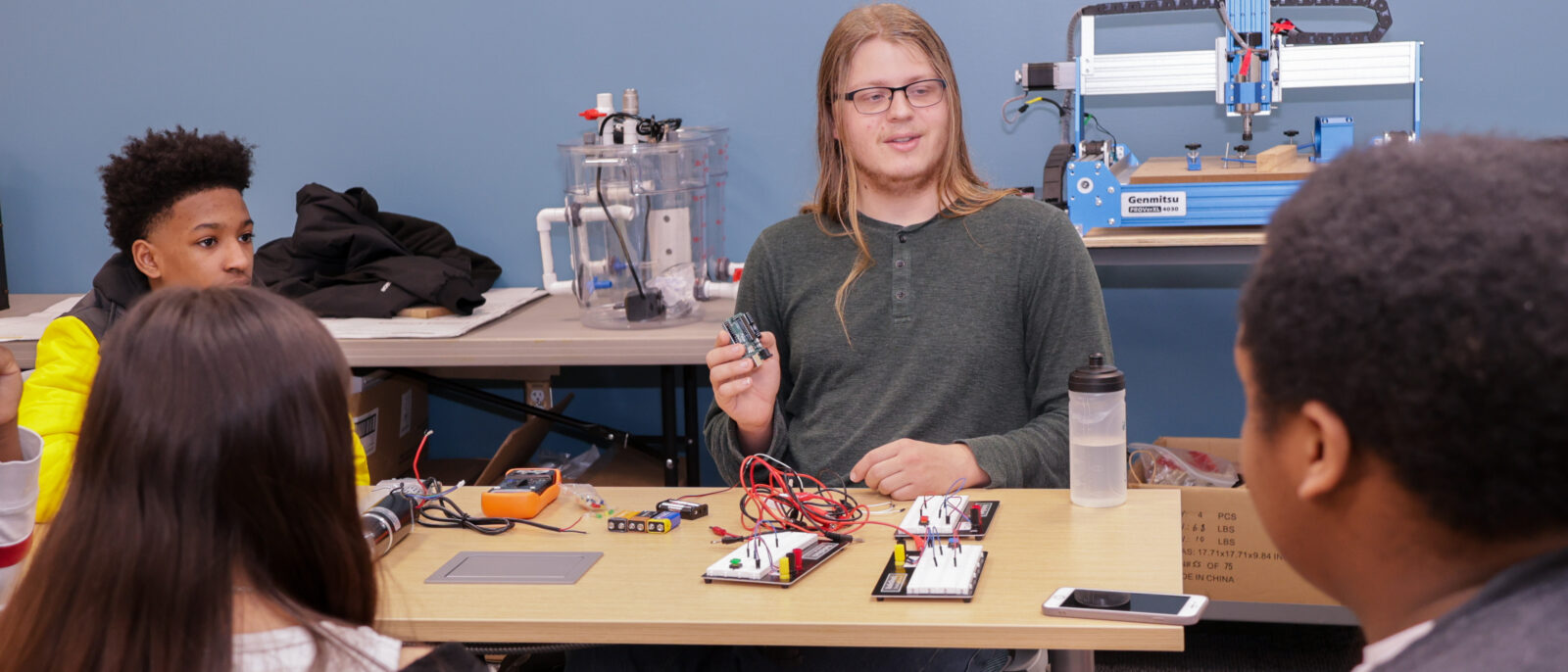“Space is for all of us. It’s meant to be shared.” – Dr. Richard Pitts, Jr.
For the first time, Harrisburg University of Science and Technology has launched a successful bid – and been chosen – to compete in the annual NASA Lunabotics Challenge. NASA announced the chosen teams back in October; now, each student delegation is busy finalizing their robot design and working through other deliverables due throughout the competition’s eight-month timeline.
NASA chooses just 50 teams from a pool of more than 100 submissions. Teams can be from public or private universities and vocational or technical schools, which means there’s a range of US institutions participating. As usual, Harrisburg University finds itself well-positioned to compete as a private STEM-focused university, despite its comparative newness to the landscape of higher education.
What Is NASA’s Lunabotics Challenge?
NASA’s Lunabotics Challenge is a two-semester event designed to immerse students in the next stages of space exploration. The challenge is designed to put students’ grasp of systems engineering and project management to the test as they design and build an autonomous robot capable of exploring and working on Earth’s moon.
The team must deliver four distinct deliverables during the competition’s timeline:
- A project-management plan
- A STEM-engagement report outlining the team’s efforts to engage with the community on STEM education
- Systems-engineering paper
- A proof-of-life video demonstrating the robot’s capabilities
Of course, the heart of the Lunabotics Challenge is designing the robot itself.
NASA provides the basic requirements for the robot’s size (0.75 meters wide by 0.75 meters high by 1.5 meters long), a maximum mass of 80 kg, and a briefing on its mission, but there are many other requirements for the competition found in the 76-page Lunabotics 2024 Guidebook that every team must read and follow. In the end, the students determine how the robot tackles its task and the final design.
The challenge is deceptively simple. The robot must excavate regolith and build a berm.
The word regolith refers to the topmost layer of loose dust, rock, or soil on a planet’s or moon’s surface. A berm is a compacted, raised area that functions as a barrier, path, or foundation. On the moon, berms could be used to shelter outposts from rocket blast or protect assets from heat or radiation.
During the challenge, after leaving the starting zone, each “Luna bot” must navigate three additional zones. The first zone is dedicated to movement and obstacle avoidance; the second is for transportation and excavation; the third is for construction.
Navigating Lunar terrain, gathering loose material, transporting the material, and engaging in light construction may not sound like a very demanding mission, but the engineering involved needs to be literally out-of-this-world.
How Did HU Get Involved and Who’s Leading the Team?
Dr. Richard Pitts, Jr., is the Program Lead and Associate Professor for Advanced Manufacturing (ADMA) at HU. He was a Lunabotics veteran years before joining HU, and his enthusiasm is a major reason why Harrisburg is sending a team this year.
“It’s not based on the school’s name, so put that aside,” said Dr. Pitts to his student team, acknowledging that HU finds itself toe-to-toe with larger, longer-established universities. “Our students are in this competition because they want to be and because they deserve to be – not because they’re from a school that’s big or famous.”
Cyrian Onyekachi Ekeagwu, a protégé of Dr. Pitts and now an ADMA faculty colleague, serves as the second faculty advisor to the team. Both advisors are clear on one point: Lunabotics is student-driven. It relies on student skills, student organization, and student management.
Timothy Hainly is the student leader of HU’s Lunabotics team and is joined by five other undergraduate students: four ADMA majors (Corrin Andrews, Ryan Bosley, and Quentin Campbell, and Martin Johnson) and one computer science (CS) major (Hosly Perez).
Compared to other schools’ teams, which might have a dozen or more student members, the HU Lunabotics team is small – but mighty! Everybody involved knows these are early days, however – and all are hopeful Lunabotics becomes an annual event for HU.
“We’d love to get grad students involved,” said Dr. Pitts. “Maybe after the first year, when they’ve seen what we can do. The opportunity to drive larger partnerships among the student community is there and we look forward to seeing not only what the Lunabotics team achieves this year, but how the program and competition can progress at HU.”
Funding for the competition came from the Gene Haas Foundation, which singled out the HU ADMA program as one of the best of its kind anywhere. The grant specifically supports student scholarships and competition teams; 2023 was HU’s second consecutive year receiving the grant.
What’s Next for HU’s Lunabotics Team?
Dr. Pitts and the rest of the Lunabotics team believe this is the start of a multi-generational effort. It’s hoped that the current student participants will carry over into subsequent years and help get new generations of engineering, manufacturing, and computer science students involved and invested.
In fact, STEM collaboration is central to the team’s next slated deliverable.
March 1, 2024, is the deadline for each team’s STEM-engagement report. The team has already been putting in the effort by inviting high-school students to Harrisburg University for STEM breakout sessions, tours of the ADMA facilities, and hands-on activities.
The first outreach event took place on February 15 with approximately 38 Steelton-Highspire high-school students in attendance. The second was on February 21 and featured two sessions with around 20 Central Dauphin East high-school students attending each one.
From top to bottom, Lunabotics is designed to inspire the childlike explorer or tinkerer within each of us.
“The process of building a robot … once you get past the research and development and into the day-to-day aspect of it, it’s like getting closer to your childlike mentality,” said Dr. Pitts. “It’s all about exploration and tinkering – going back to the basics.”
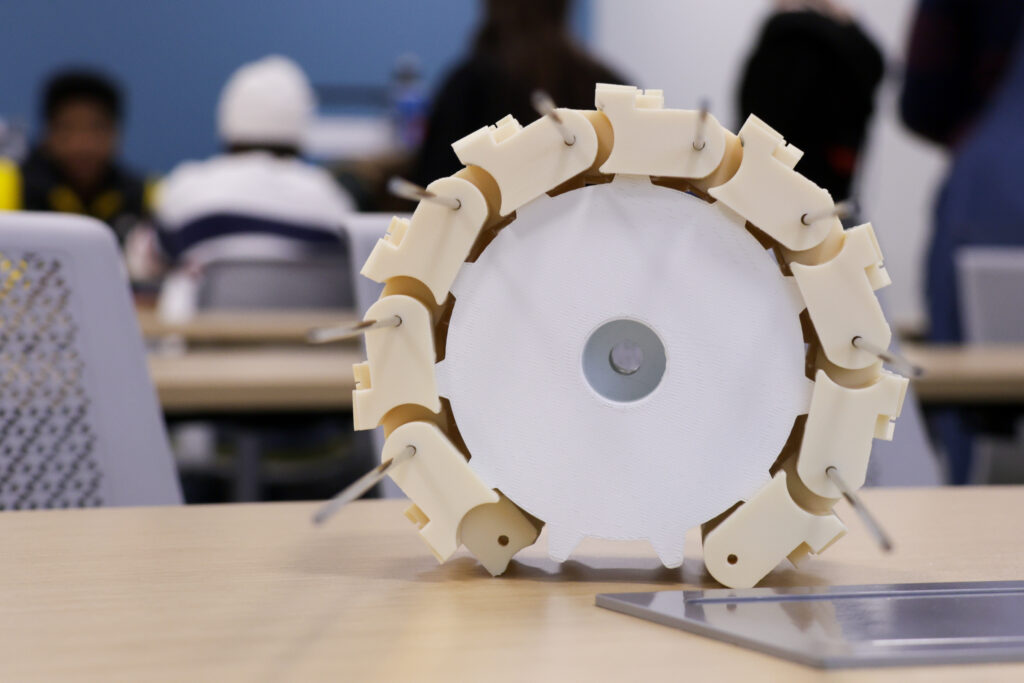
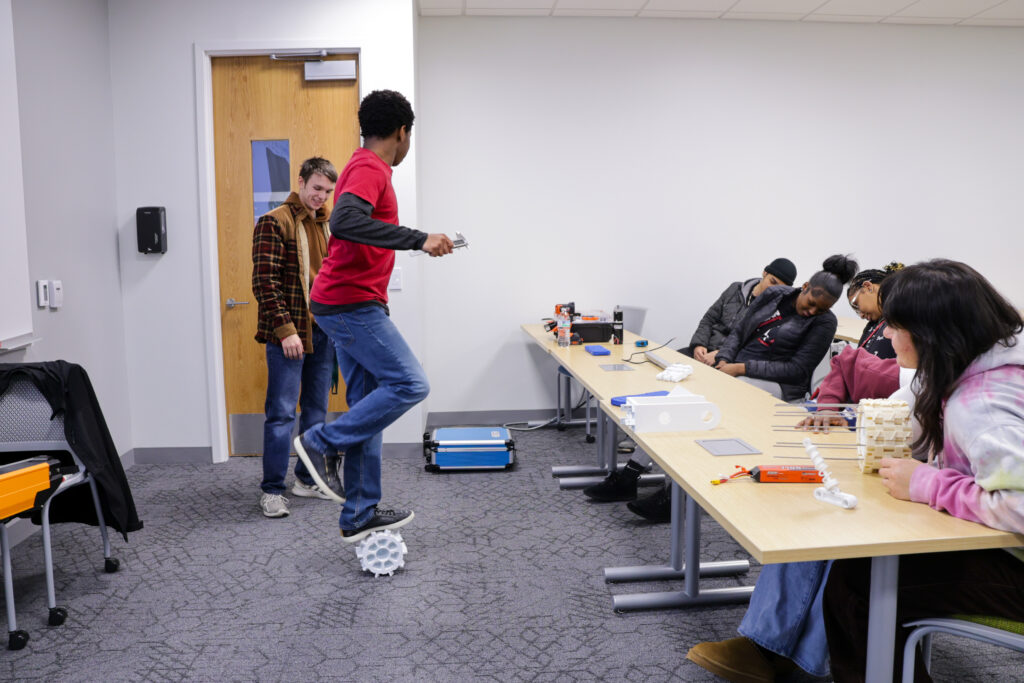
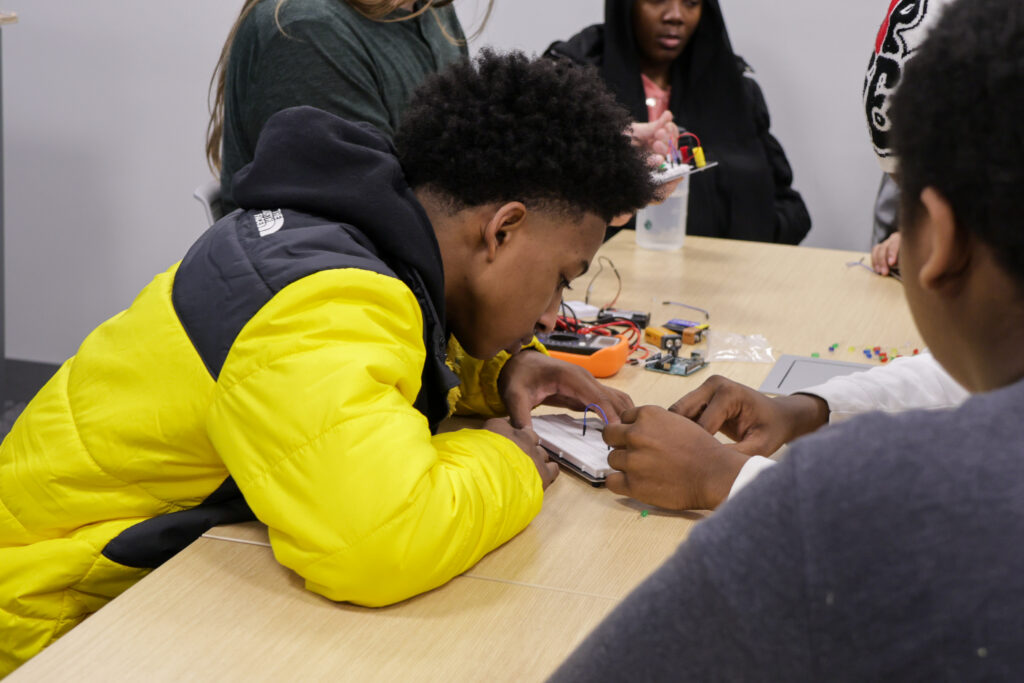
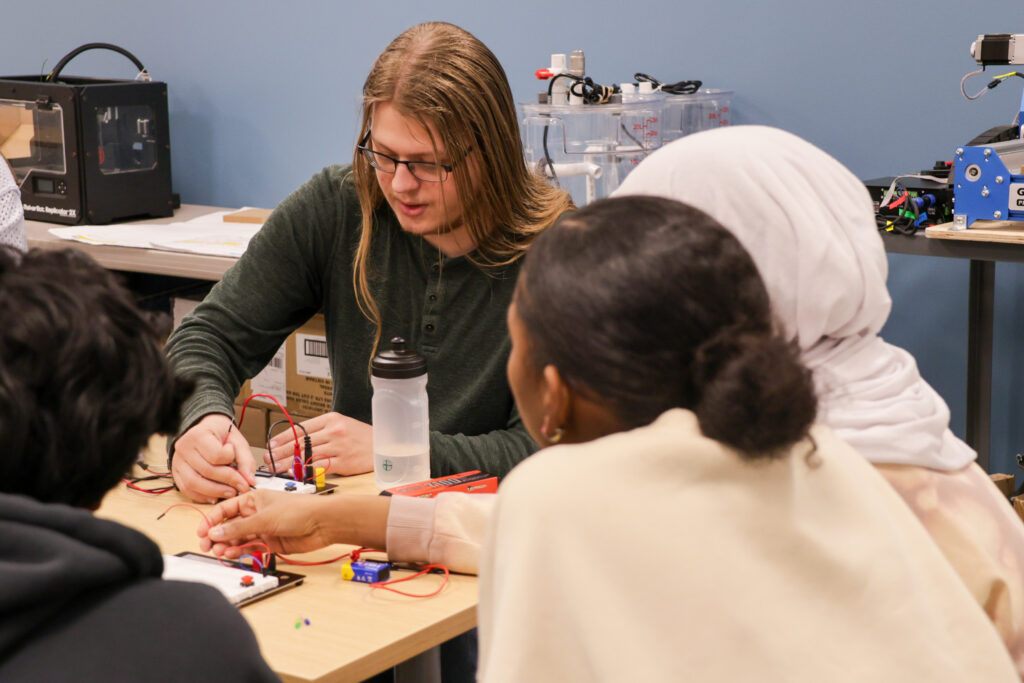
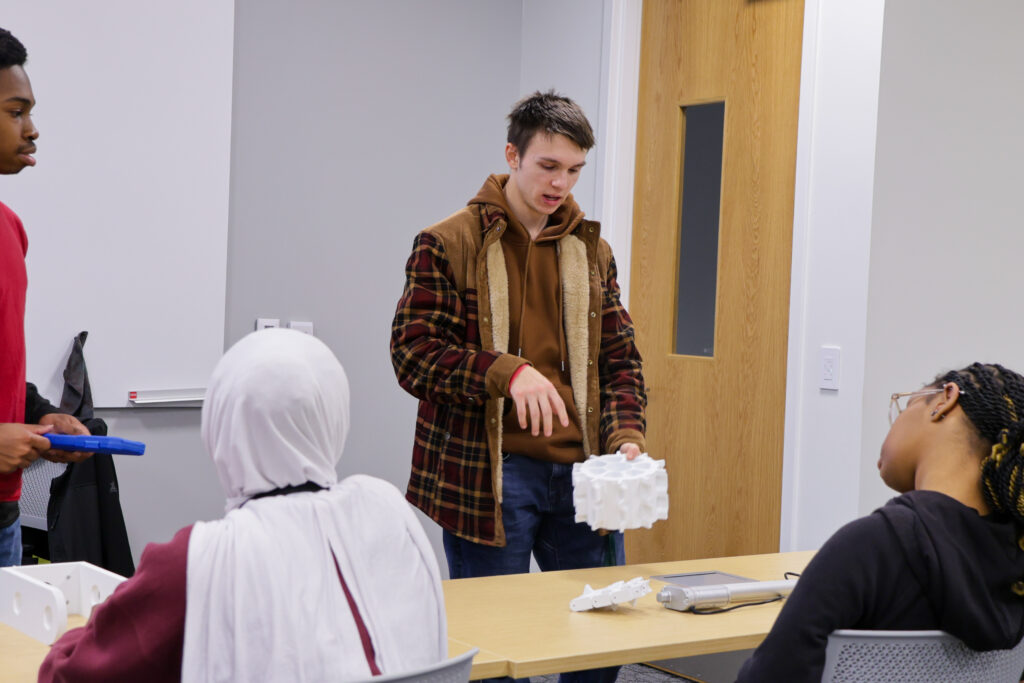
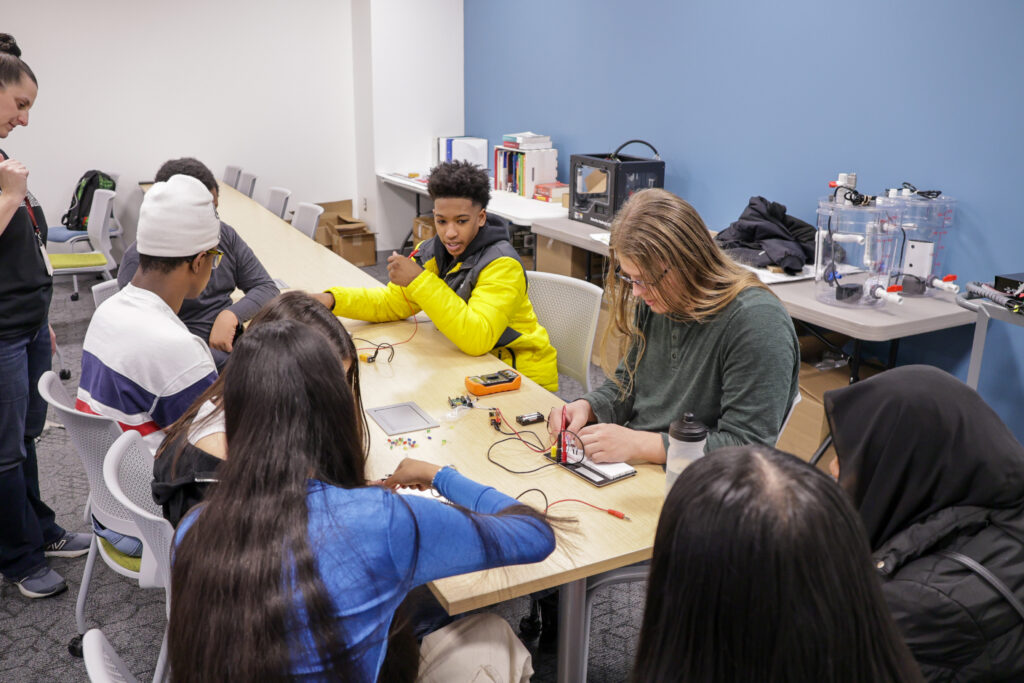
Follow and Support #HULunabotics
This is just the beginning of the HU Lunabotics journey (which you can follow on Instagram).
The team is currently fine-tuning their parts designs and budget. This year, they’re looking for a roughly 30-70 split for fabricated parts versus off-the-shelf parts. In the future, the ratio might be closer to 1:10 in favor of parts designed and manufactured in-house.
Here’s the team’s timeline for the coming months:
- March 1 – STEM-engagement report plus presentation and demonstration slides due
- March 27 – Systems-engineering paper due
- April 3 – Proof-of-life video due
- May 11 – Qualification event at University of Central Florida (Orlando, FL)
- May 15 – Onsite challenge at Kennedy Space Center (Merritt Island, FL)
Competitions like Lunabotics remind us how cosmically insignificant the human race is. Engineering a robot that can work on the moon is considerable work, to say nothing of human habitation. Yet, the Lunar surface remains a rich source of scientific insights and a crucible for the technologies that will someday get humankind to Mars and beyond.
Until then, HU is making its mark on a competition that’s been gathering the country’s brightest engineering students each year since 2010. The team has high hopes for its chances at the qualification event in May, but they also know they’re breaking new ground – literally – just by being there.
ABOUT HARRISBURG UNIVERSITY
Harrisburg University is accredited by the Middle States Commission on Higher Education and is a private, nonprofit university offering bachelor’s and graduate degree programs in the fields of science, technology, and mathematics. For additional information about the University’s affordable, demand-driven undergraduate and graduate programs, please call 717-901-5146 or email Connect@HarrisburgU.edu. Stay updated by following Harrisburg University on X, LinkedIn, Instagram, and Facebook.
